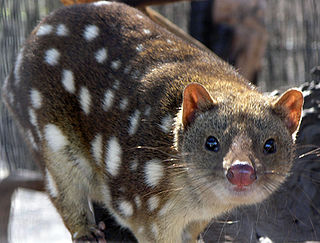
The Dasyuridae are a family of marsupials native to Australia and New Guinea, including 71 extant species divided into 17 genera. Many are small and mouse-like or shrew-like, giving some of them the name marsupial mice or marsupial shrews, but the group also includes the cat-sized quolls, as well as the Tasmanian devil and the extinct thylacine. They are found in a wide range of habitats, including grassland, underground, forests, and mountains, and some species are arboreal or semiaquatic. The Dasyuridae are often called the 'marsupial carnivores', as most members of the family are insectivores.

The northern quoll, also known as the northern native cat, the North Australian native cat or the satanellus is a carnivorous marsupial native to Australia.

The northern brown bandicoot, a marsupial species, is a bandicoot found only on the northern and eastern coasts of Australia and nearby islands, mainly Papua New Guinea. It is not, however, found far inland.
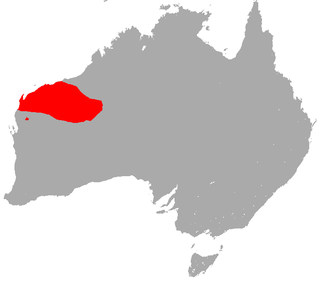
The little red kaluta is a small, reddish-brown, shrew-like mammal native to dry grasslands of northwest Australia. It is active at night, feeding on insects and other small animals. The kaluta is a marsupial and is the only member of its genus, Dasykaluta. Individuals are around 10 cm (3.9 in) long and weigh from 20 to 40 g. They live for about four years in captivity. Other common names include little red antechinus, russet antechinus and spinifex antechinus.

The yellow-footed antechinus, also known as the mardo, is a shrew-like marsupial found in Australia. One notable feature of the species is its sexual behavior. The male yellow-footed antechinus engages in such frenzied mating that its immune system becomes compromised, resulting in stress related death before it is one year old.

Antechinus is a genus of small dasyurid marsupial endemic to Australia. They resemble mice with the bristly fur of shrews.
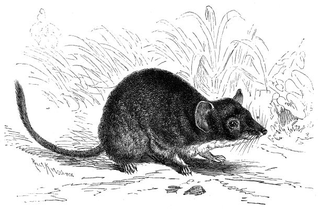
The Phascogalini are a tribe in the family Dasyuridae, comprising seven genera of small marsupials native to Australia and New Guinea.
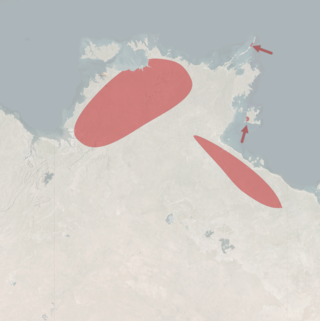
The sandstone false antechinus, also known as the sandstone pseudantechinus, the sandstone antechinus, the sandstone dibbler, Harney's antechinus and the Northern dibbler, is a species of small carnivorous marsupial, which has a patchy distribution in Australia's Northern Territory.

The Alexandria false antechinus, also known as the Carpentarian false antechinus or Carpentarian pseudantechinus, is a small carnivorous marsupial, found only in a number of small, isolated localities in northern Australia. It is the smallest and rarest of the false antechinuses.

Woolley's false antechinus, also known as Woolley's pseudantechinus, is a species of small carnivorous marsupial belonging to the family Dasyuridae. It is found in the Australian state of Western Australia, primarily in the Pilbara, Ashburton and Murchison regions.
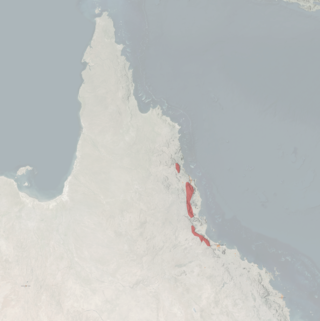
The tropical antechinus, also known as the rusty antechinus, is a species of small marsupial carnivore, particularly closely related to the brown antechinus.

The brown antechinus, also known as Stuart's antechinus and Macleay's marsupial mouse, is a species of small carnivorous marsupial of the family Dasyuridae. The males die after their first breeding season, and the species holds the world record for being the world's smallest semelparous mammal.
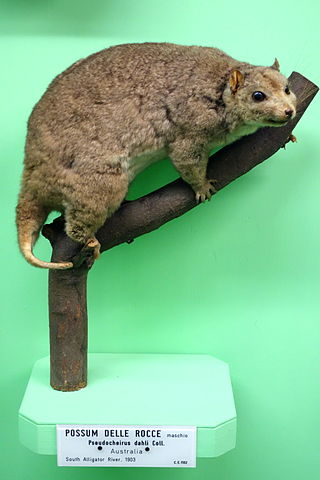
The rock-haunting ringtail possum, also known as the rock ringtail possum, is a species of Australian possum. It is found in rocky escarpments in the Kimberley, Arnhem Land and Gulf of Carpentaria across Western Australia and Northern Territory and just passing the Queensland border. It is also found on Groote Eylandt. It is the only species in the genus Petropseudes, but is part of the group including the common ringtail possum.

The spectacled hare-wallaby is a species of macropod found in Australia and New Guinea. In Australia, a small sub-population is found on Barrow Island, while the mainland type is widespread, though in decline, across northern regions of the country.
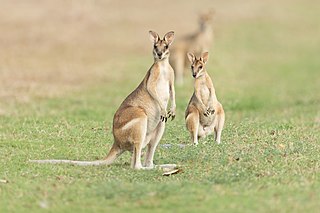
The agile wallaby, also known as the sandy wallaby, is a species of wallaby found in northern Australia and southern New Guinea. It is the most common wallaby in north Australia. The agile wallaby is a sandy colour, becoming paler below. It is sometimes solitary and at other times sociable and grazes on grasses and other plants. The agile wallaby is not considered threatened.

The short-eared rock-wallaby is a species of rock-wallaby found in northern Australia, in the northernmost parts of the Northern Territory and Western Australia. It is much larger than its three closest relatives, the eastern short-eared rock-wallaby, the nabarlek and the monjon.
The grassland mosaic-tailed rat, or grassland melomys, is a species of rodent in the family Muridae. It is found in Australia and Papua New Guinea. In Australia it is found along the northern coast from Kimberley to New South Wales. In the Top End it is often found in Pandanus. Kunwinjku of western Arnhem Land call this animal mulbbu.
The dusky rat is an indigenous species of rodent in the family Muridae found in Australia.

The northern brushtail possum is a nocturnal marsupial inhabiting northern Australia. The northern brushtail possum is sometimes considered a species, however more often than not is considered a subspecies of the common brushtail possum.

The savanna glider is a species of arboreal gliding possum in the genus Petaurus.




















